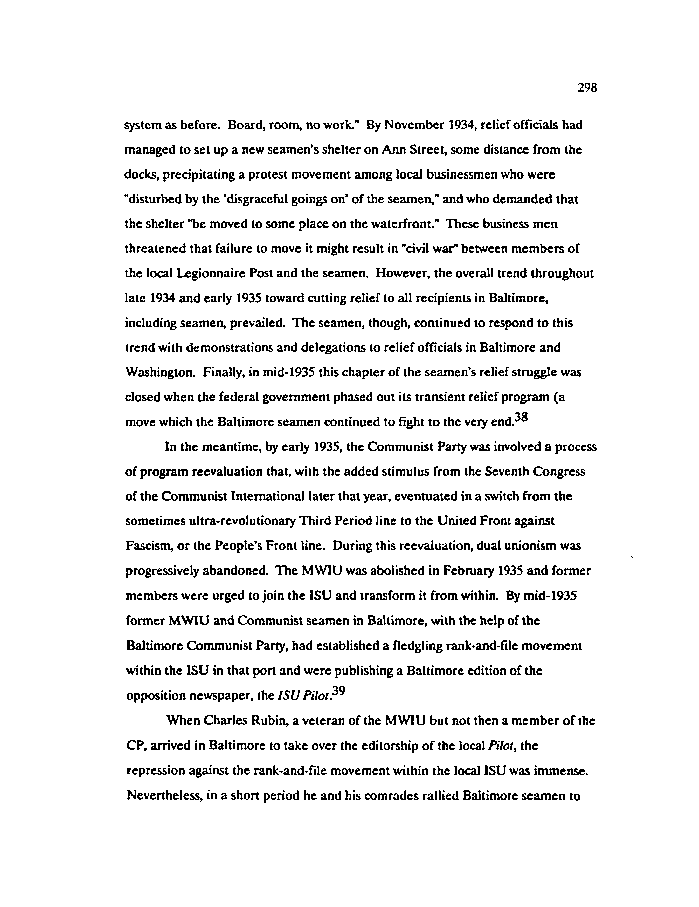|
298
system as before. Board, room, no work." By November 1934, relief officials had
managed to set up a new seamen's shelter on Ann Street, some distance from the
docks, precipitating a protest movement among local businessmen who were
"disturbed by the 'disgraceful goings on* of the seamen," and who demanded that
the shelter "be moved to some place on the waterfront." These business men
threatened that failure to move it might result in "civil war" between members of
the local Legionnaire Post and the seamen. However, the overall trend throughout
late 1934 and early 1935 toward cutting relief to all recipients in Baltimore,
including seamen, prevailed. The seamen, though, continued to respond to this
trend with demonstrations and delegations to relief officials in Baltimore and
Washington. Finally, in mid-1935 this chapter of the seamen's relief struggle was
closed when the federal government phased out its transient relief program (a
move which the Baltimore seamen continued to fight to the very end.38
In the meantime, by early 1935, the Communist Party was involved a process
of program revaluation that, with the added stimulus from the Seventh Congress
of the Communist International later that year, eventuated in a switch from the
sometimes ultra-revolutionary Third Period line to the United Front against
Fascism, or the People's Front line. During this revaluation, dual unionism was
progressively abandoned. The MWIU was abolished in February 1935 and former
members were urged to join the ISU and transform it from within. By mid-1935
former MWIU and Communist seamen in Baltimore, with the help of the
Baltimore Communist Party, had established a fledgling rank-and-file movement
within the ISU in that port and were publishing a Baltimore edition of the
opposition newspaper, the ISU Pilot.
When Charles Rubin, a veteran of the MWIU but not then a member of the
CP, arrived in Baltimore to take over the editorship of the local Pilot, the
repression against the rank-and-file movement within the local ISU was immense.
Nevertheless, in a short period he and his comrades rallied Baltimore seamen to
|

